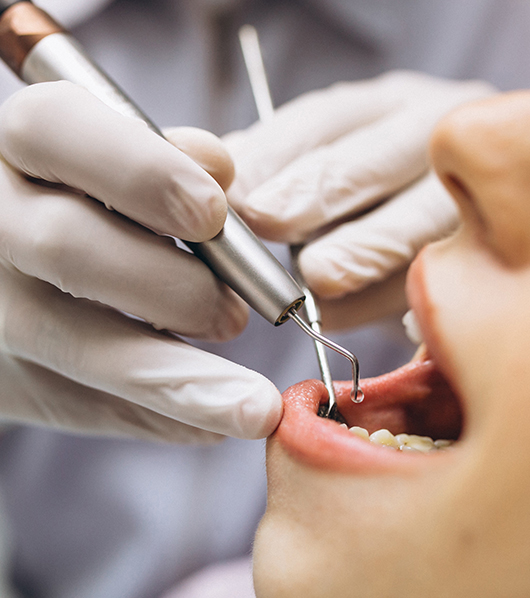
Periodontics is a specialized field of dentistry that focuses on the prevention, diagnosis, and treatment of diseases and conditions affecting the supporting structures of the teeth, such as the gums, periodontal ligaments, and alveolar bone. These structures are collectively known as the periodontium. Here are some common periodontics treatments:
This non-surgical procedure is used to treat gum disease (gingivitis or periodontitis) by removing plaque and tartar (calculus) from the tooth surfaces, both above and below the gumline. The roots of the teeth are also smoothed (root planing) to promote the healing and reattachment of the gums
In more advanced cases of gum disease where scaling and root planing are not sufficient, periodontal surgery may be necessary. There are several types of periodontal surgeries, including pocket reduction (flap) surgery, soft tissue grafts, bone grafts, and guided tissue regeneration.
Periodontists are often involved in the placement and maintenance of dental implants. These are titanium posts surgically implanted into the jawbone to replace missing teeth and provide stable support for dental crowns, bridges, or dentures.
When the gums recede due to gum disease or other factors, gum grafting can be performed to cover exposed tooth roots and prevent further recession. Grafted tissue may be taken from the patient's palate or a tissue bank.
This procedure is done to expose more of the tooth's crown by removing gum tissue and, if needed, bone. It is often performed to prepare a tooth for a dental restoration or to improve the appearance of a "gummy" smile.
After undergoing periodontal treatment, patients require regular maintenance visits with their periodontist or dentist. These visits include cleanings and check-ups to monitor the health of the gums and prevent the recurrence of gum disease.
In some cases, the tooth structure above the gum line may be insufficient to support a dental crown. Crown lengthening involves removing a small amount of gum and bone tissue to expose more of the tooth's surface, creating a stable foundation for the crown.
This technique involves bonding weak or loose teeth together to provide additional support. Splinting is often used after periodontal treatment to stabilize teeth and enhance their longevity.
Periodontists work closely with general dentists and other dental specialists to provide comprehensive care for patients with gum disease and other periodontal issues. If you are experiencing symptoms like bleeding gums, gum recession, or loose teeth, it is essential to seek professional dental care promptly. Early diagnosis and treatment by a periodontist can help preserve your oral health and prevent the progression of gum disease, which, if left untreated, can lead to tooth loss and other oral health complications.
